3D printing is revolutionizing manufacturing and design by enabling the creation of complex, customized parts, such as insoles tailored to an individual's foot shape and biomechanics. This article will discuss the use of Multi Jet Fusion (MJF) printing and Ultrasint® TPU01, a thermoplastic polyurethane (TPU) material, in producing insoles with intricate lattice structures and various benefits. This versatile material is also used in sports protection equipment, orthopaedic models, car interior components, tools, grippers, and pipes due to its unique properties, such as high shock absorption, energy return, and resistance to fatigue.
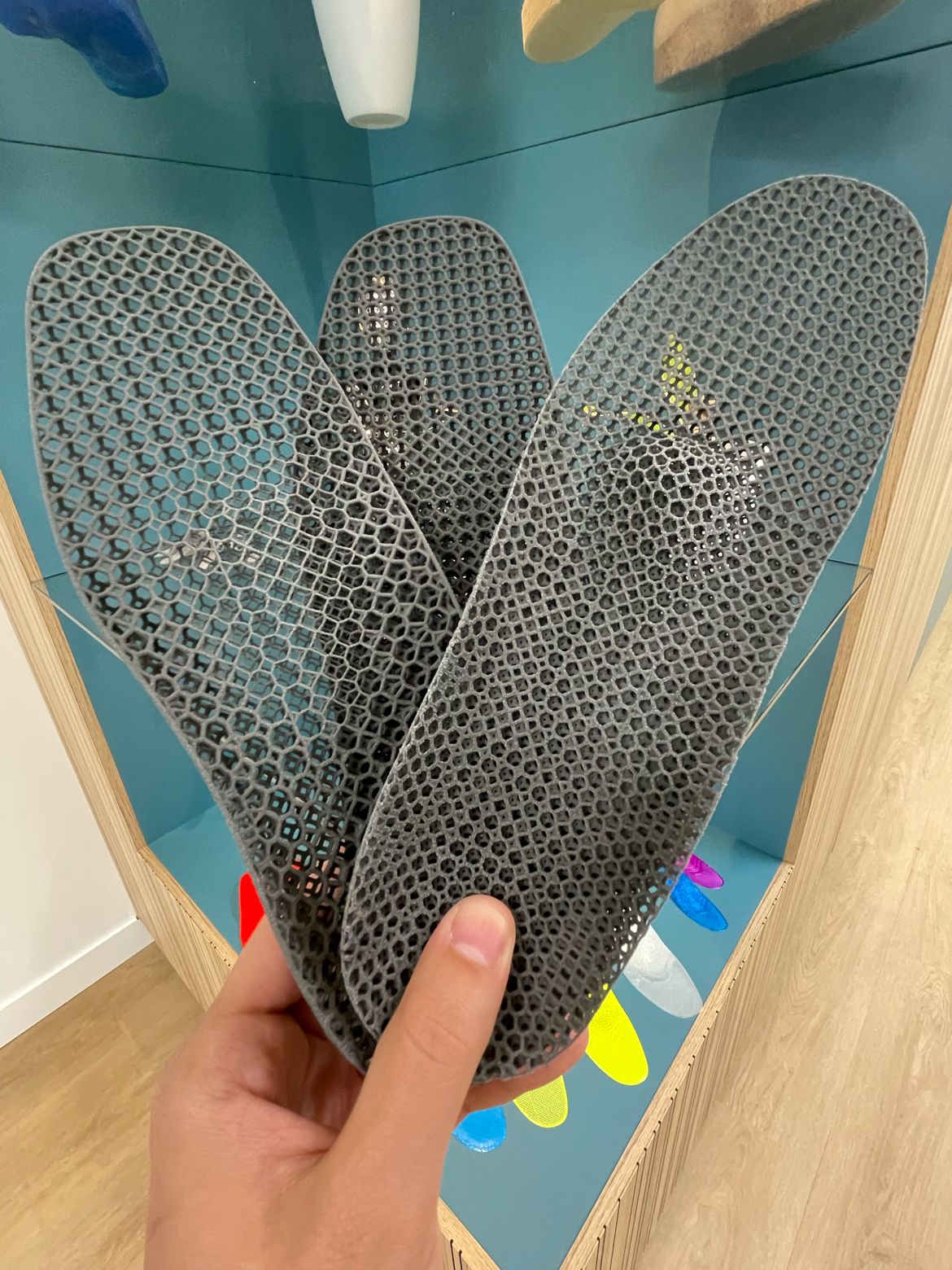 Insoles with 3 different hardnesses
Insoles with 3 different hardnesses
What is MJF Printing?
MJF is a type of powder bed fusion technology that builds parts layer by layer by depositing material on a build platform. It uses a fine powder as the raw material, which is fused together layer by layer using a fusing agent and a detailing agent.
- High Speed: MJF is one of the fastest 3D printing technologies available. The print head applies fusing and detailing agents across the entire surface of the powder bed in one pass, enabling high-speed printing.
- High Precision: The detailing agent helps create sharp edges and fine details in the printed parts, resulting in high dimensional accuracy and a smooth surface finish. This level of precision also means that the parameters are really accurate and the reproducibility is high, ensuring consistent results across multiple prints.
- Durable Parts: MJF-printed parts have mechanical properties comparable to injection molded parts, making MJF suitable for functional prototypes and end-use parts.
 HP Jet Fusion 5200 Series Industrial 3D printing Solution. Visit the 5200 Series website
HP Jet Fusion 5200 Series Industrial 3D printing Solution. Visit the 5200 Series website
Lattices and Their Advantages
Lattices are repeated patterns comprised of a network of cells, beams, and nodes. 3D-printed lattices can be designed to have different properties such as stiffness, energy dissipation, aesthetics, and lightweight characteristics. This allows one material with different lattice structures to exhibit many behaviors.
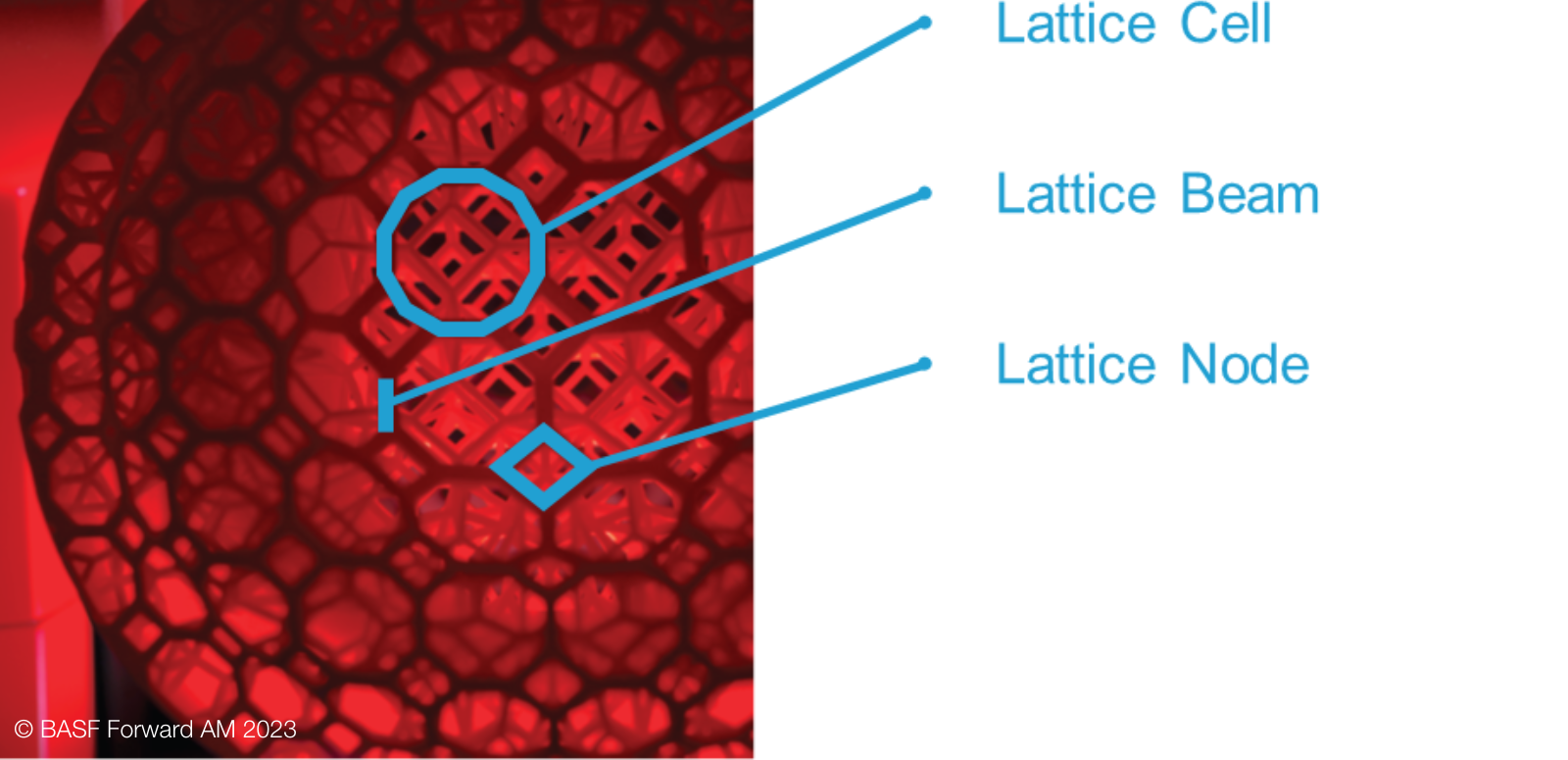 Lattices explained with cell, beam and nodes
Lattices explained with cell, beam and nodes
- Weight Reduction: Lattice structures can significantly reduce the weight of a part without compromising its structural integrity. This is particularly important for applications in aerospace, automotive, and other industries where weight reduction is a critical consideration.
- Material Efficiency: Lattice structures use less material compared to solid structures, which can lead to cost savings, especially when using expensive materials.
- Customized Mechanical Properties: The mechanical properties of a part can be tailored by adjusting the design of the lattice structure. For example, the stiffness or flexibility of a part can be optimized for a specific application by modifying the lattice geometry.
- Improved Performance: Lattice structures can be designed to optimize the performance of a part in various ways, such as maximizing its strength-to-weight ratio, optimizing its response to dynamic loads, or improving its energy absorption capabilities.
In the context of insoles, lattice structures can be used to create insoles with varying levels of flexibility and support in different areas of the foot. This can help to provide a more comfortable and supportive fit compared to off-the-shelf insoles. Additionally, the material efficiency of lattice structures can lead to cost savings, making it a more economical option for producing customized insoles.
Material: Ultrasint® TPU01
The foundation of any 3D printed object is the material it is made from. Forward AM has developed a game-changing material in this regard - Ultrasint® TPU01. This multi-purpose TPU powder is perfectly suited for the production of parts that require shock absorption, energy return, or flexibility. These properties make it an incredibly versatile material, capable of meeting the demands of various applications, from automotive components to customized footwear.
More information on the settings and other technical details can be found in the technical datasheet: Ultrasint® TPU01 Technical Datasheet.
 ULTRASINT® TPU01 material
ULTRASINT® TPU01 material
Printer Specifications
The TPU material, Ultrasint® TPU01, is specifically designed for HP’s 5200 series Multi Jet Fusion printers. These printers are optimized to work with this material and ensure the best possible results.
Regulatory Considerations
It is important to consider any regulatory requirements that may apply to the production of insoles using MJF printing and Ultrasint® TPU01. This may include safety standards, certifications, and any other regulatory requirements that apply to medical devices or wearable products. Additionally, the material, is certified according to ISO 9001, ISO 14001, ISO 10993-10, and ISO 10993-5 standards. These certifications indicate that the material meets international standards for quality management, environmental management, irritation and skin sensitization, and cytotoxicity, respectively, ensuring its suitability and safety for use in medical and wearable applications.
Environmental Considerations
MJF printing with Ultrasint® TPU01 is a more sustainable option compared to other materials and manufacturing methods, as it has an 80/20 (old/new) recyclability ratio. However, it is still important to consider the environmental impact of the entire production process, including the energy consumption of the printer, the disposal of any waste material, and the transportation of the finished insoles.
Software Requirements
Designing insoles requires specialized software that can handle the lattices involved in creating a customized product. LutraCAD is a special software designed to produce any kind of insole using any production technique. It is an open system, meaning people can use their own scanners, milling machines, and 3D printers with any printing technique. For MJF printing, customers can change the beam thickness to their required hardness. Additionally, LutraCAD software automates the entire workflow and integrates with partners to provide an optimized end-to-end workflow. This ensures efficiency, consistency, and high-quality results in the production process.
1. Designing Your Insoles
The LutraCAD software provides a fluent, user-friendly, and optimized workflow for designing your insoles. It guides you through the entire process, from importing the foot scan, adjusting the design, and selecting the material properties, to generating the lattice structure and exporting the file for printing. The intuitive interface and comprehensive features make it easy to create customized insoles that provide the perfect fit and support for each individual.
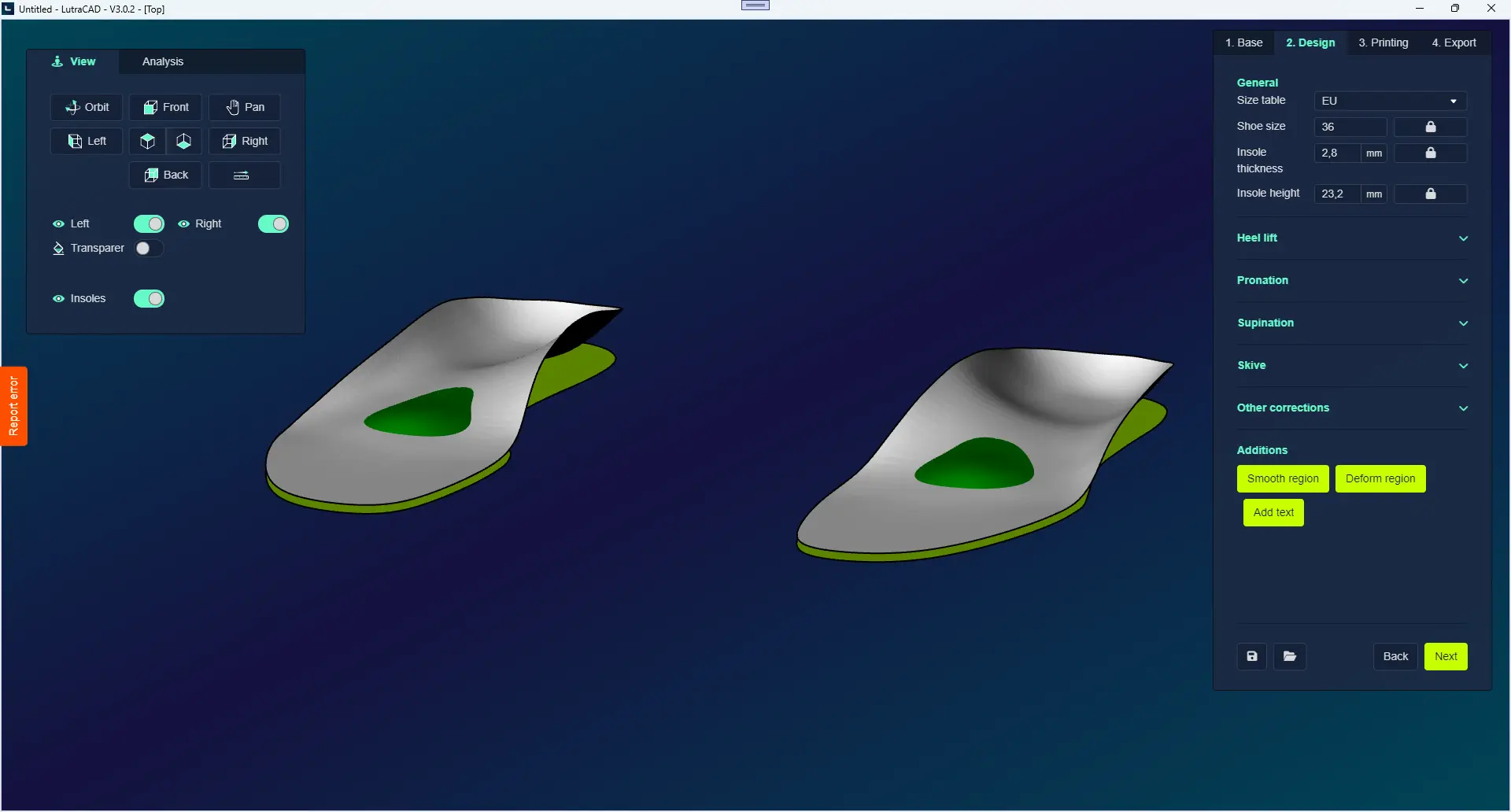 Intuitie and optimized design workflow of LutraCAD.
Intuitie and optimized design workflow of LutraCAD.
2. Defining Your Shore Hardness
LutraCAD includes an easy selection tool that allows you to define the shore hardness of different regions of the insole. You can split the insole into multiple regions and set a specific shore value for each region. This allows you to tailor the insole to provide the right level of cushioning and support in each area of the foot, for example, a softer lattice for the heel and a firmer material for the arch.
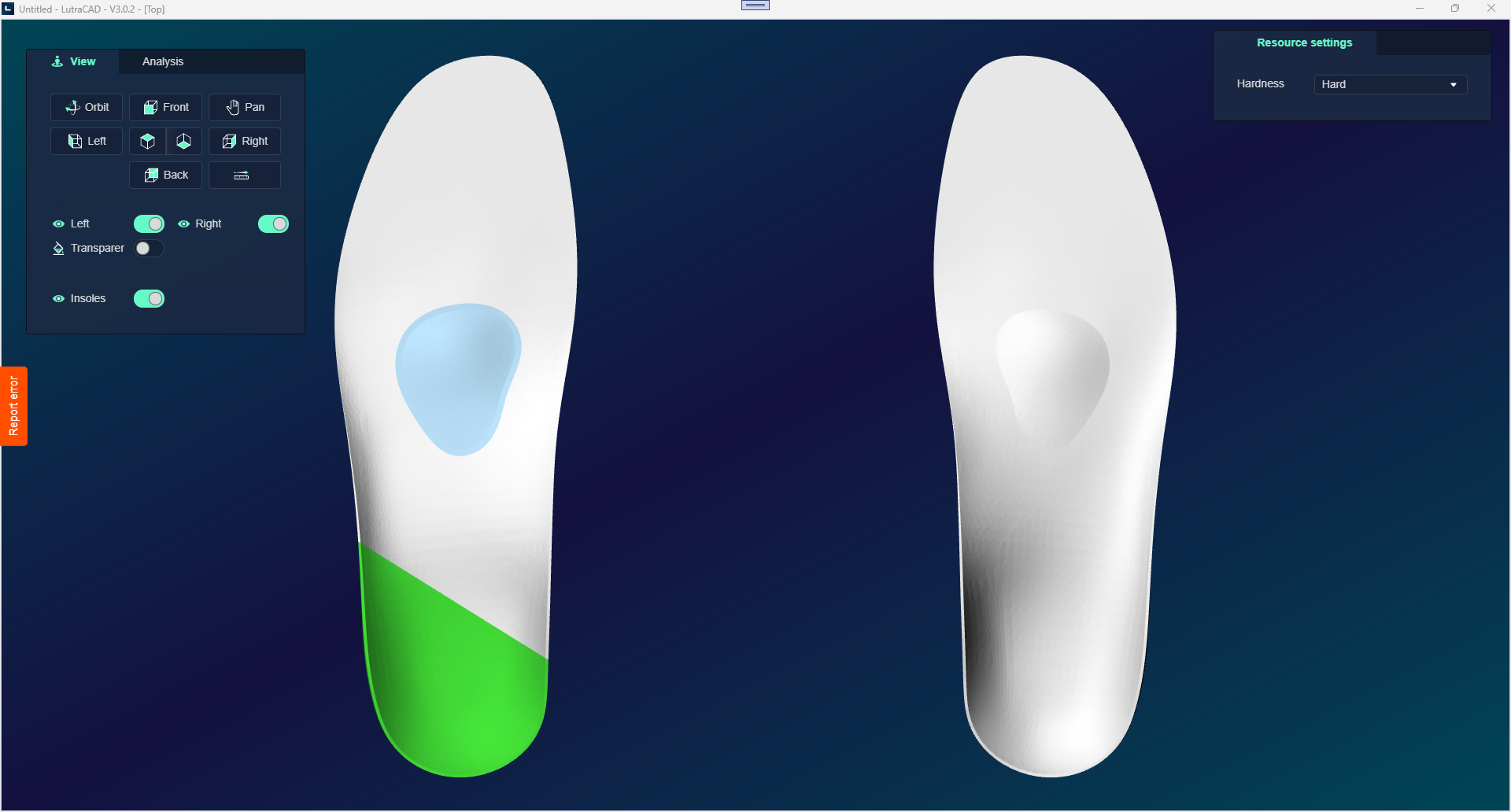 Select the density and create different regions.
Select the density and create different regions.
3. Generate and Export the Lattice Structures
Once the design is finalized, LutraCAD generates the lattice structure and optimizes the file for printing. The files are optimized by LutraCAD to have no quality loss and to be around 50MB per insole. This allows you to upload it at any service bureau, making it easy to outsource the printing if you do not have an MJF printer. This feature ensures that the insoles can be produced efficiently and with the highest quality, regardless of the printing equipment available.
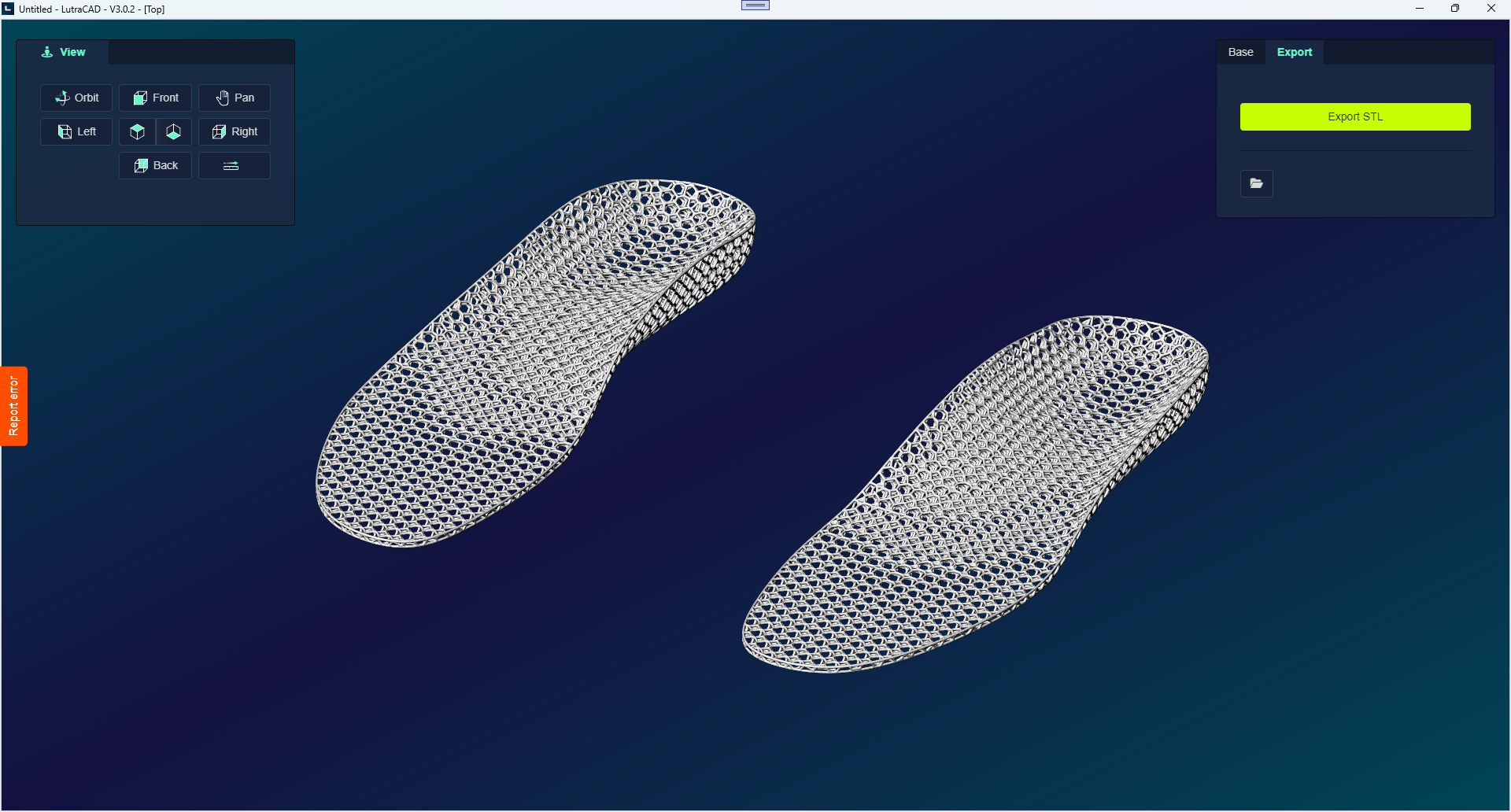 With 1 click, generated lattice structure for 3D printing.
With 1 click, generated lattice structure for 3D printing.
Cost for Outsourcing at a Service Bureau
The cost of outsourcing the printing of insoles at a service bureau can vary, but it typically ranges between 25-150 euros. This cost includes the printing service and material cost. It's important to get a detailed quote from the service bureau to understand all the costs involved.

These tests were done in cooperation with our partner ZiggZagg from Belgium. Find out more about ZiggZagg
Looking for the right partner? Reach out to our sales team.
Other Applications
In addition to printing insoles, MJF printing can also be used to produce other orthopedic products, such as braces, shoe lasts, and midsoles. This provides a versatile solution for producing a wide range of customized orthopedic products.
In the picture you can see a small shoe last printed as a test. Our goal is to also be able to print shoe lasts in 2 or 3 parts.
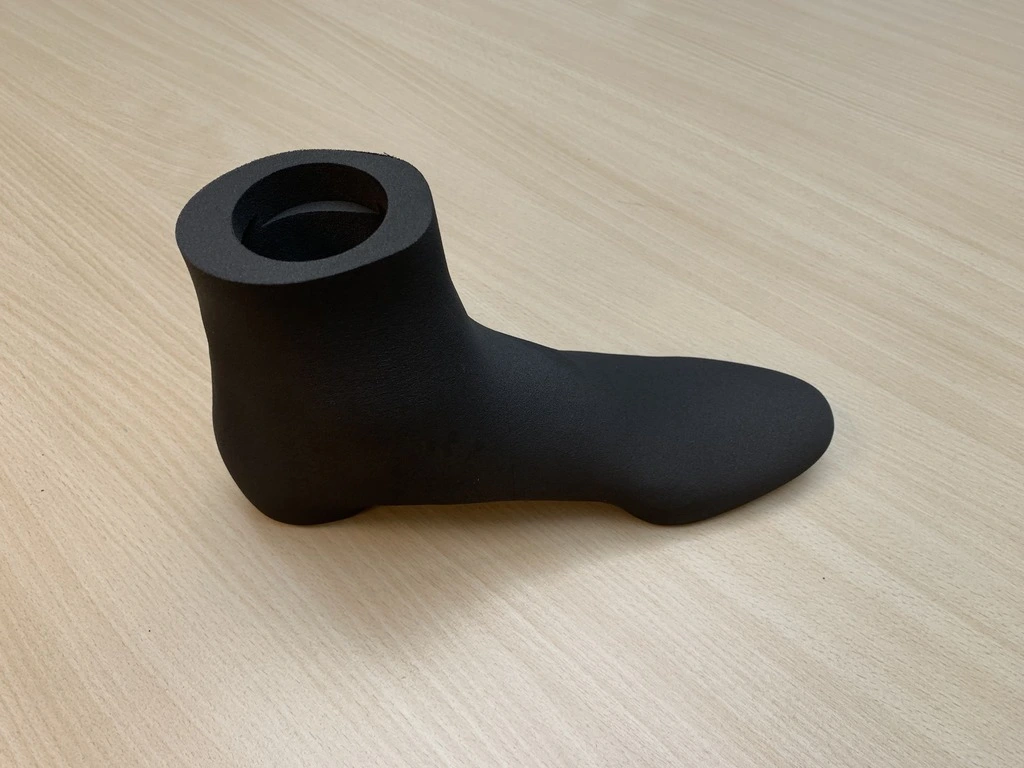 3D printed shoe last by ZiggZagg
3D printed shoe last by ZiggZagg
Conclusion
3D printing with MJF offers a revolutionary way to create customized insoles with complex lattice structures that provide various benefits, such as weight reduction, material efficiency, customized mechanical properties, and thermal management. TPU, in particular, provides additional advantages such as high shock absorption, energy return, resistance to fatigue, chemical resistance, and recyclability. Designing insoles with MJF involves considerations such as customization, durability, flexibility, gradient transition, and depowdering. Ultimately, MJF and TPU provide a powerful combination for creating insoles that are customized, durable, flexible, and sustainable.
At LutraCAD, we are not only specialized in insole, shoe last, and midsole design, but we also have expertise in any scanning and production technique. If you need assistance with any projects related to these areas, please don't hesitate to reach out to us.







